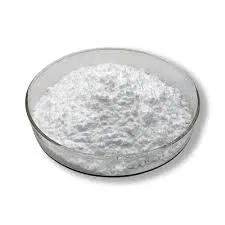
Nov . 09, 2024 01:15 Back to list
Exploring the Characteristics and Properties of HPMC in Various Applications
Understanding HPMC Properties and Their Applications
Hydroxypropyl methylcellulose (HPMC) is a widely used cellulose ether that has gained significant attention in various industries due to its unique properties. It is a white, odorless, and tasteless powder that is soluble in cold water to form a clear gel or viscous solution. HPMC is derived from cellulose, a natural polymer found in plant cell walls, and is modified to enhance its functional characteristics. Its solubility, thickening, and film-forming abilities make it invaluable in diverse applications ranging from pharmaceuticals to food and construction.
One of the most notable properties of HPMC is its ability to act as a thickening agent. This property is critical in formulations where viscosity is essential for performance and stability. In the pharmaceutical industry, HPMC is utilized in the preparation of controlled-release drug formulations, where it helps regulate the release of the active ingredient over time. Its ability to form a gel matrix aids in controlling the dissolution rate of medication, thus enhancing therapeutic efficacy.
Understanding HPMC Properties and Their Applications
HPMC is also valued in the construction industry, particularly in cement and mortar applications. It enhances the workability and flow of these materials while improving adhesion to various substrates. The incorporation of HPMC provides benefits such as extended open time, allowing for more flexibility in construction processes, and reducing cracking and shrinkage in hardened products.
hpmc properties

In food applications, HPMC serves as a food additive (designated as E464) and is used for various purposes, including as a thickener, emulsifier, and stabilizer. Its ability to retain moisture makes it a desirable ingredient in baked goods, contributing to improved texture and shelf life. HPMC is also used in gluten-free formulations to mimic the texture of gluten, providing a better mouthfeel in products for those with dietary restrictions.
Moreover, HPMC possesses excellent film-forming properties that enable its use in cosmetics and personal care products. It can create a protective film on the skin, enhancing moisture retention while providing a smooth application for creams and lotions. Its non-toxic nature makes it suitable for use in products that are applied directly to the skin.
Lastly, HPMC is environmentally friendly, given that it is derived from renewable sources. It is biodegradable and safe for various applications, making it an attractive alternative to synthetic polymers in numerous sectors.
In conclusion, the properties of HPMC are diverse and multifunctional, making it a critical ingredient across various industries. Its thickening, binding, film-forming, and stabilizing characteristics allow for enhanced performance in pharmaceuticals, construction, food, and personal care products. As industries continue to look for effective and sustainable solutions, the significance of HPMC is likely to grow, reinforcing its role as an essential material in both traditional and innovative applications. As research progresses, we can expect to see even more exciting developments surrounding the use of HPMC in the future.
-
Versatile Hpmc Uses in Different Industries
NewsJun.19,2025
-
Redispersible Powder's Role in Enhancing Durability of Construction Products
NewsJun.19,2025
-
Hydroxyethyl Cellulose Applications Driving Green Industrial Processes
NewsJun.19,2025
-
Exploring Different Redispersible Polymer Powder
NewsJun.19,2025
-
Choosing the Right Mortar Bonding Agent
NewsJun.19,2025
-
Applications and Significance of China Hpmc in Modern Industries
NewsJun.19,2025







